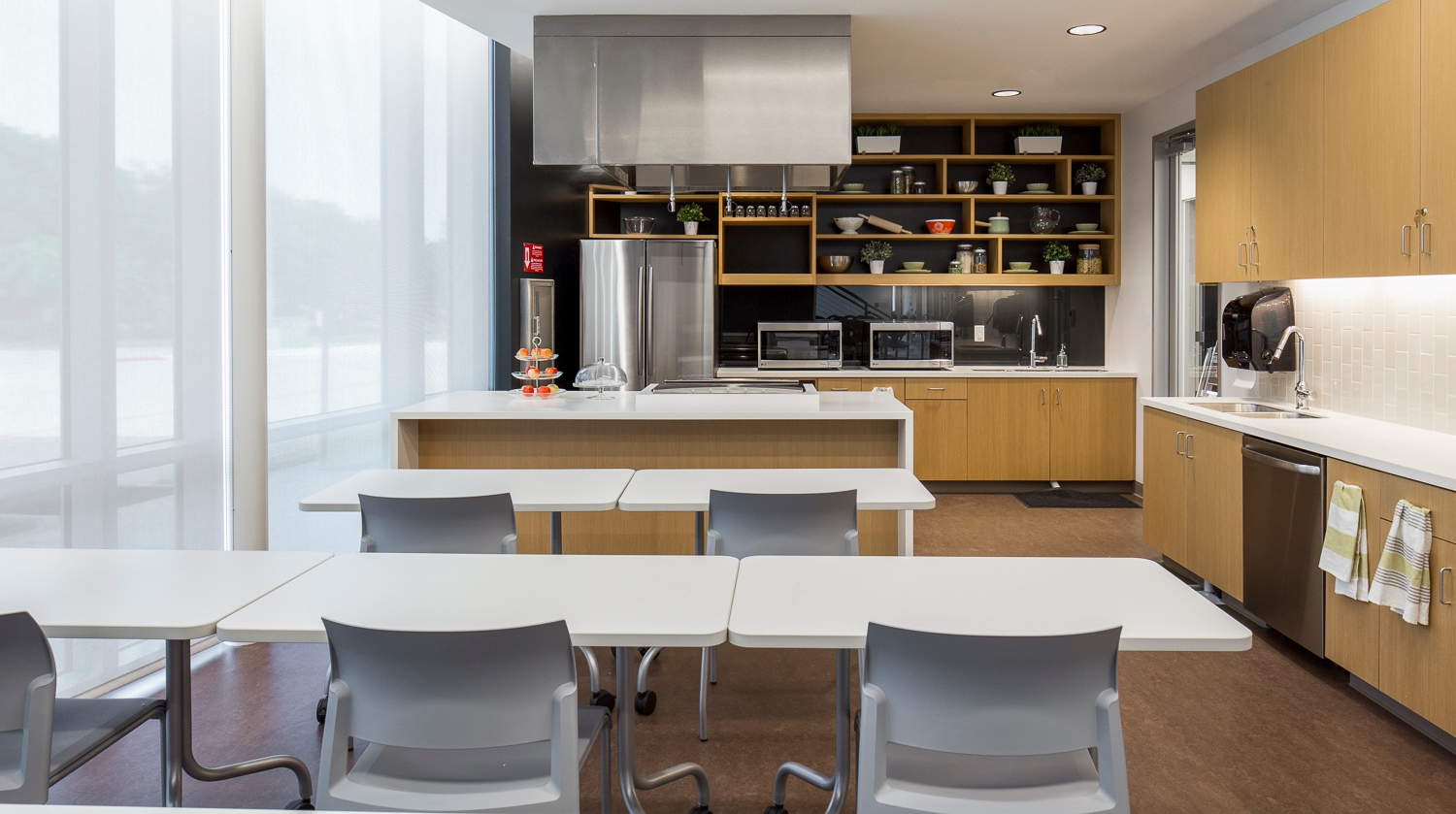Dustin Staiger
If you read our recent blog about eating at your desk, you know how awful it is to skip breaks and lunches throughout the workday. Desk eating is dangerous for your mental and physical health as well as for the quality of the work you think you’re getting done.
So if you and your employees should never eat at your desk, where should you eat? Studies conducted on workplaces varying in size have made clear the importance of an appropriate kitchen and dining option at one’s workplace. Here are 3 reasons why you should provide your employees a desirable place where they can congregate and eat together.
BUILD TEAM COHESION
Employees who eat together are 36% more likely to communicate outside lunch hours, according to a recent study conducted by Steelcase. When you’re an executive who needs a cohesive team, anything that cultivates trust and camaraderie between your employees is a worthwhile investment. This is yet another reason you don’t want your employees staying glued to their desks when they should be taking a break for lunch.
In the same Steelcase study, 91% of employees said they consider it important to have a space where they can recharge and reenergize throughout their workday. Sadly, only 51% say they have a space within their office where recharging and reenergizing can take place.
Does your office kitchen look like this? Is your office kitchen a place where your employees look forward to spending their time? If not, you may be losing out on valuable opportunities to boost morale and team cohesion in a way that can’t be done through isolated activities like “official team-building” seminars.
DESK EATING IS DANGEROUS FOR YOUR MENTAL AND PHYSICAL HEALTH AS WELL AS FOR THE QUALITY OF THE WORK YOU THINK YOU’RE GETTING DONE.
BUILD YOUR COMPANY BRAND
99% of the employees studied said they wish company information would be more available. It’s unlikely these organizations are withholding information. Most of the time, the channels a company uses to communicate information aren’t as effective as their executives expect.
At the same time, 84% of workers claim to stay connected to organizational information most through team meetings or word of mouth with other employees. Many people depend on their coworkers to share information about their own company. Branding your space helps reinforce a sense of purpose in your workplace. This is why kitchen and dining areas are powerful places to communicate the company brand and encourage information sharing among employees.
For example, take a look at our Houston client’s space that creates brand awareness in a desirable area.
BUILD A CULTURE
Millennials will account for 75% of the workforce by 2025. This age demographic is facing a variety of financial challenges as they come out of college and enter the work force. Interestingly, Fast Company’s recent investigation into millennials’ behavior demonstrates that despite these financial challenges, they aren’t interested solely in money.
50% of millennials prefer meaningful company cultures to high salaries. Millennials, having grown up watching their parents’ intertwining of work with their personal life, know that joining a company will impact the rest of their lives.
What kind of community and interactions are you offering to attract the best talents, who are entering the workforce in increasing numbers? 90% of job candidates are interested in your answer to that question. One amenity you can provide to attract and retain talent is a recharging kitchen and dining area in your workplace. This kind of space, like the one below we created for an Austin customer, is an investment in you and your team. Ultimately, research shows the return you receive in increased productivity, cohesive teamwork, stronger branding and culture will make it worthwhile.

